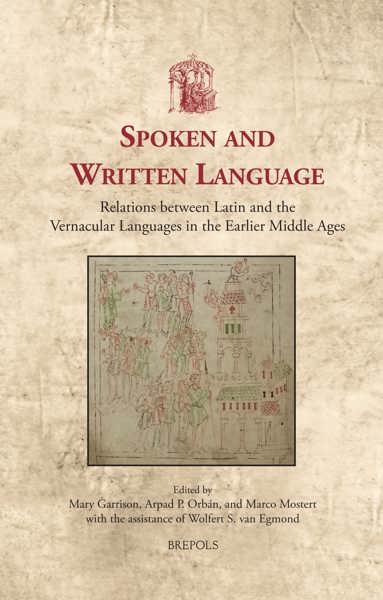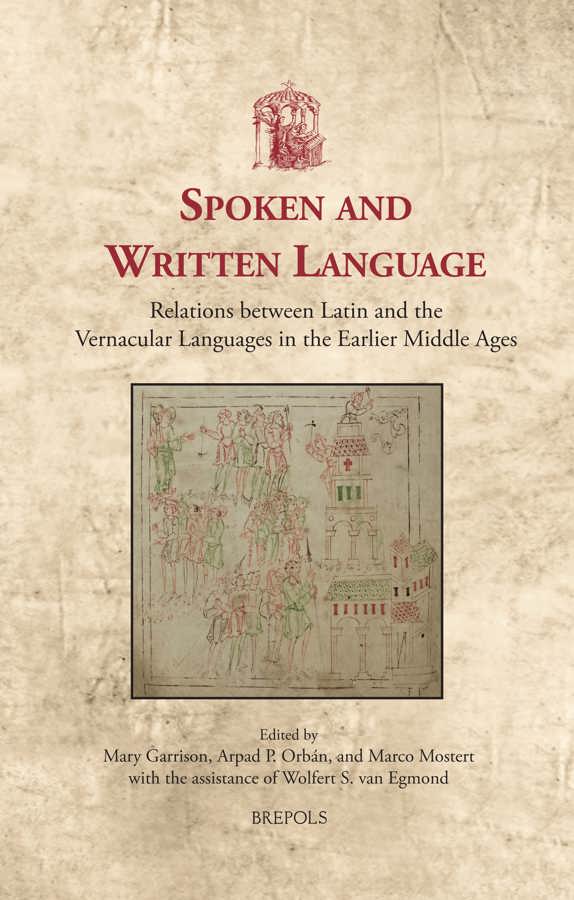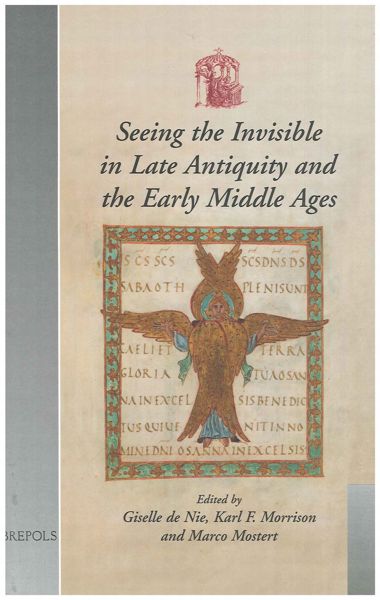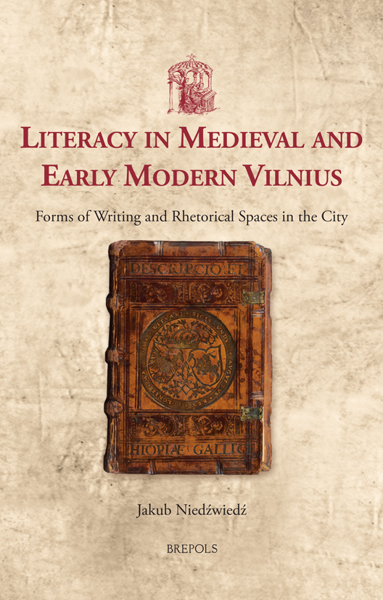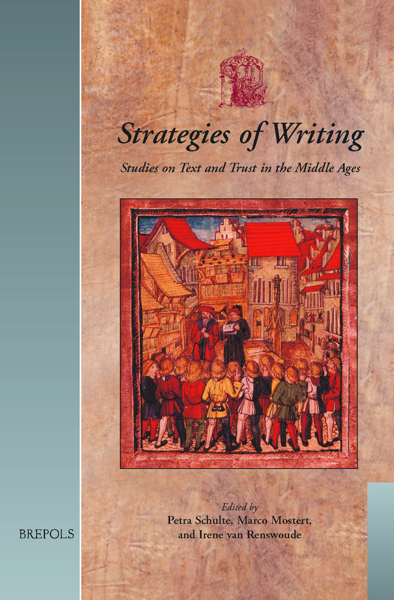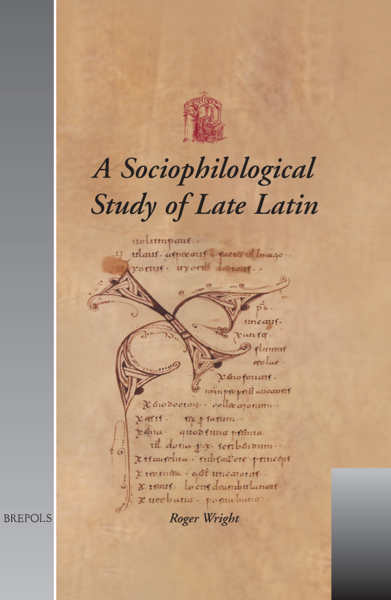
Spoken and Written Language
Relations between Latin and the Vernacular Languages in the Earlier Middle Ages
Mary Garrison, Arpad P. Orbán, Marco Mostert (eds)
- Pages: 364 p.
- Size:156 x 234 mm
- Illustrations:8 b/w, 4 col.
- Language(s):English, German, French
- Publication Year:2013
- € 95,00 EXCL. VAT RETAIL PRICE
- ISBN: 978-2-503-50770-5
- Hardback
- Available
- € 95,00 EXCL. VAT RETAIL PRICE
- ISBN: 978-2-503-54321-5
- E-book
- Available
"As the above survey should hopefully indicate, this book contains many valuable contributions to the study of Latin and the vernaculars, (...)". (Juliet Mullins, in: Óenach: FMRSI Reviews, 5.2, 2013, p. 32-36)
"(...) the volume is definitely worth reading." (Eleanor Dickey, in: Journal of English and Germanic Philology, Vol. 113/4, October 2014, p. 518)
"(...) the whole book (...) successfully presents a very colourful picture. (...) the book is ultimately an important contribution to the research on medieval multilingualism." (Lucie Doležalová, in: The Journal of Medieval Latin, Vol. 24, 2014, p. 294-297)
"(...) the articles are imaginative, original, insightful, deeply-learned, and informative." (Gernot Wieland, in: Mittellateinisches Jahrbuch, 50.2, 2015, p. 338-341)
"This book is of interest to those studying the interaction of Old English or other vernaculars and Latin, and is especially useful in placing Old English in a wider European vernacular context." (Christine Wallis, in: Year's Work in English Studies, 94.1, 2015, p. 130)
The linguistic situation of medieval Europe has sometimes been characterized as one of diglossia: one learned language, Latin, was used for religion, law, and documents, while the various vernaculars were used in other linguistic registers. Informing the relationship between Latin and the vernaculars was the choice of Latin as the language of the Western Roman Empire and the Roman Church. This choice entailed the possibility of a shared literary culture and heritage across Europe, but also had consequences for access to that heritage. Scholarship on the Romance languages has contested the relevance of the term diglossia, and the divergence between written or spoken Latin and Romance is a subject of energetic debate. In other linguistic areas, too, questions have been voiced. How can one characterize the interaction between Latin and the various vernaculars, and between the various vernaculars themselves? To what extent could speakers from separate linguistic worlds communicate? These questions are fundamental for anyone concerned with communication, the transmission of learning, literary history, and cultural interaction in the Middle Ages. This volume contains contributions by historians, cultural historians, and students of texts, language, and linguistics, addressing the subject from their various perspectives but at the same time trying to overcome familiar disciplinary divisions.
Preface
Abbreviations
Trace Elements of Obliterated Vernacular Languages in Latin Texts - MICHAEL RICHTER
Qu’une femme ne peut pas être appelée homme: Questions de langue et d’anthropologie autour du concile de Mâcon (585) - A. DEMYTTENAERE
Wie groß war der Einfluß des Griechischen auf die Sprache der (ersten) lateinischen Christen? - ARPÁD ORBÁN
Die Figur des Dolmetschers in der biographischen Literatur des westlichen Mittelalters (IV.-XII. Jh.) - WALTER BERSCHIN
Nordic Digraphia and Diglossia - INGER LARSSON
The Non-Classical Vocabulary of Celtic Latin Literature: An Overview - ANTHONY HARVEY
The Cena Adamnani or Seventh-Century Table Talk - MICHAEL W. HERREN
Latin and Old English in Ninth-Century Canterbury - NICHOLAS BROOKS
A Sociophilological Study of the Change to Official Romance Documentation in Castile - ROGER WRIGHT
L’ancien français (archaïque) et le fonctionnement de la communication verticale latine en Gaule (VIIe-VIIIe siècles) - MARC VAN UYTFANGHE
Quelques exemples de compromis morphologiques au VIIIe siècle en Francia - MICHEL BANNIARD
Latin Grammars and the Structure of the Vernacular Old Irish Auraicept na nÉces - RIJCKLOF HOFMAN
From Monks’ Jokes to Sages’ Wisdom: The Joca Monachorum Tradition and the Irish Immacallam in dáThúarad - CHARLES D. WRIGHT
Writing in Latin and the Vernacular: The Case of Old High German - DENNIS GREEN
Volkssprachige Glossen für lateinkundige Leser? - ROLF BERGMANN
Rustice vel Teodisce appellatur oder: Warum schreibt man Glossen? - AREND QUAK
Typen und Funktionen volkssprachiger (althochdeutschen) Eintragungen im lateinischen Kontext - ELVIRA GLASER
Liturgical Latin in Early Medieval Gaul - ELS ROSE
Sprach Ludwig der Deutsche deutsch? - DIETER GEUENICH
Latin and Three Vernaculars in East Central Europe from the Point of View of the History of Social Communication - ANNA ADAMSKA
